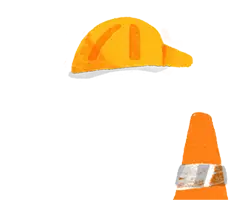Part 8Strikes and lockouts
Jurisdiction of Employment Court
100Jurisdiction of court in relation to injunctions
The court has full and exclusive jurisdiction to hear and determine any proceedings issued for the grant of an injunction—
- to stop a strike or lockout that is occurring or to prevent a threatened strike or lockout; or
- to stop any picketing related to a strike or lockout or to prevent any threatened picketing related to a strike or lockout; or
- to stop a specified pay deduction that is being, or is to be, made.
-
No other court has jurisdiction to hear and determine any action or proceedings seeking the grant of an injunction—
- to stop a strike or lockout that is occurring or to prevent a threatened strike or lockout; or
- to stop any picketing related to a strike or lockout or to prevent any threatened picketing related to a strike or lockout; or
- to stop a specified pay deduction that is being, or is to be, made.
-
Where any action or proceedings seeking the grant of an injunction to stop a strike or lockout or to prevent a threatened strike or lockout are commenced in the court, and the court is satisfied that participation in the strike or lockout is lawful under section 83 or section 84,—
- the court must dismiss that action or those proceedings; and
- no proceedings seeking the grant of an injunction to stop that strike or lockout or to prevent that threatened strike or lockout may be commenced in the District Court or the High Court.
Subsection (5) applies if any action or proceedings seeking the grant of an injunction to stop a specified pay deduction that is being, or is to be, made are commenced in the court, and the court is satisfied that—
- the employer is entitled to make a deduction under section 95A; and
- notice has been given in accordance with section 95B; and
- the deduction has been correctly calculated in accordance with section 95C.
If the court is satisfied of the matters specified in subsection (4)(a) to (c),—
- the court must dismiss that action or those proceedings; and
- no proceedings seeking the grant of an injunction to stop that specified pay deduction may be commenced in the District Court or the High Court.
-
Repealed -
Repealed
Compare
- 1991 No 22 s 74
Notes
- Section 100(1)(b): amended, on , by section 63(1) of the Employment Relations Amendment Act 2014 (2014 No 61).
- Section 100(1)(c): inserted, on , by section 10(1) of the Employment Relations (Pay Deductions for Partial Strikes) Amendment Act 2025 (2025 No 35).
- Section 100(1)(c): repealed, on , by section 30(1) of the Employment Relations Amendment Act 2018 (2018 No 53).
- Section 100(2)(b): amended, on , by section 63(3) of the Employment Relations Amendment Act 2014 (2014 No 61).
- Section 100(2)(c): inserted, on , by section 10(2) of the Employment Relations (Pay Deductions for Partial Strikes) Amendment Act 2025 (2025 No 35).
- Section 100(2)(c): repealed, on , by section 30(1) of the Employment Relations Amendment Act 2018 (2018 No 53).
- Section 100(4): inserted, on , by section 10(3) of the Employment Relations (Pay Deductions for Partial Strikes) Amendment Act 2025 (2025 No 35).
- Section 100(4): repealed, on , by section 30(2) of the Employment Relations Amendment Act 2018 (2018 No 53).
- Section 100(5): inserted, on , by section 10(3) of the Employment Relations (Pay Deductions for Partial Strikes) Amendment Act 2025 (2025 No 35).
- Section 100(5): repealed, on , by section 30(2) of the Employment Relations Amendment Act 2018 (2018 No 53).


